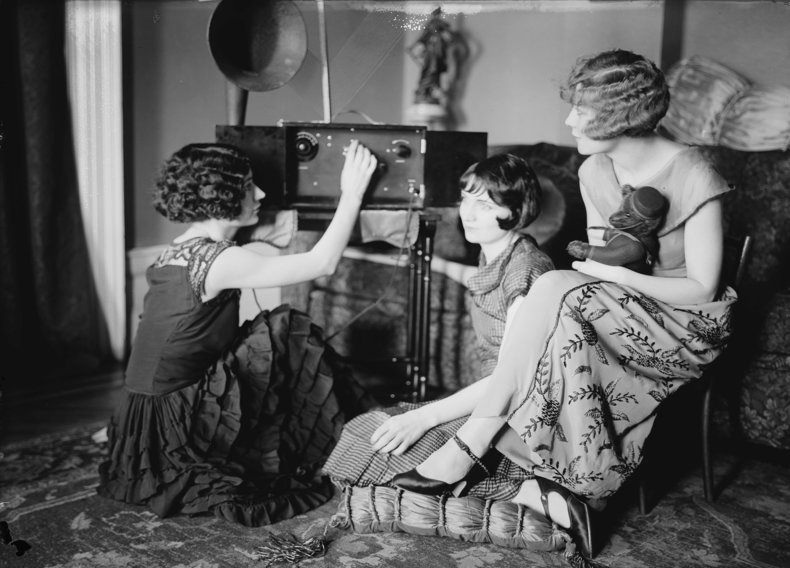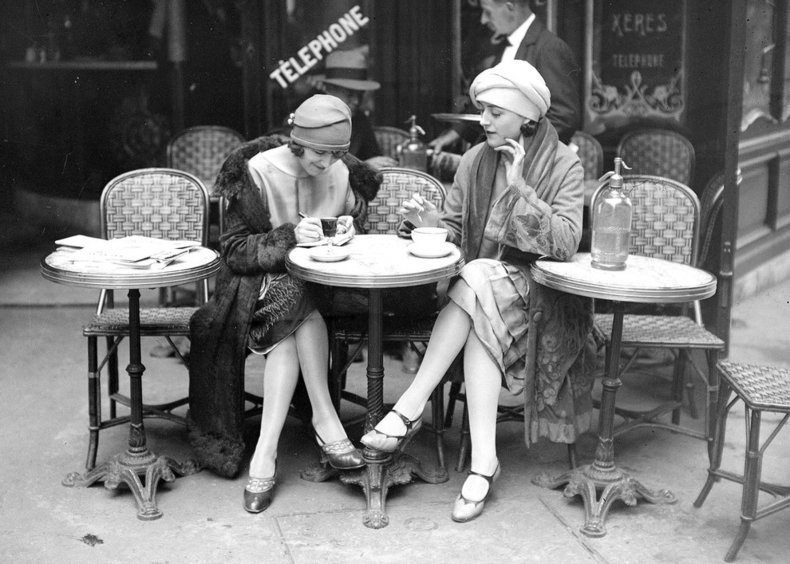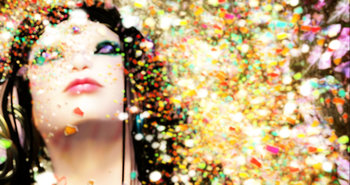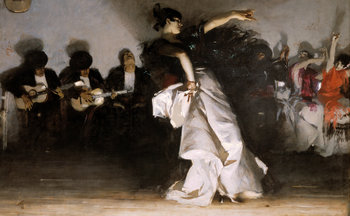
American Culture
The Jazz Age was the first major wave of American culture that became a global phenomena. America was the largest economy in the world by the end of the Gilded Age but was viewed as a cultureless place of economic opportunism. This changed with the incredible creative output of America in the 1920s that included jazz, movies, fashion and architecture.
Lost Generation
The lost generation were individuals born between 1883 and 1900 that came of age during WWI from 1914-1918. This has a double meaning as many members of this generation, particularly young men, died in WWI such that they were literally gone. Another meaning is the sense of nihilism that came out of the destructive insanity of WWI that may explain the abandonment of the convention and seriousness of the Victorian and Edwardian ages.
Jazz
Jazz arose out of African American musical traditions such as Ragtime and Blues around 1917. This quickly evolved into a highly danceable, offbeat type of jazz known as Swing music that was the dominant form of popular music in the jazz age.
Modernity
The Jazz Age was an age of optimism and confidence in modernity and change. The automobile, airplane, airship, telephone, talkie (movie with sound) and radio made the world feel like a smaller place with culture quickly reverberating and building on itself across borders.
Radio
On November 2, 1920 the radio station KDKA Pittsburgh made the first commercial radio broadcast. This was an overnight success with lines forming at shops that sold radios. Within 4 years there were 600 radio stations in the United States. By the end of the 1920s, 60 percent of American families owned a radio. This changed the world as suddenly up-to-date music and entertainment was available to all creating a shared experience across large populations.
Telephones
By 1920, 35% of homes had a telephone such that people could call their friends to make plans. This allowed for extended friendships with people that you don't regularly meet as part of a routine such as neighbors, school and work.
Urbanization
In the 1920 census, it was revealed that, for the first time, more than half of people in the United States lived in cities at 51.2%. Around 1925, New York passed London to be the largest city on the planet at 7,774,000. The fast pace of urbanization at this time contributed to the sense of change, displacement and futurism.
Youth Culture
The 1920s sees the emergence of the first modern youth culture whereby it became clear that each generation had a very different experience of growing up due to the high rate of technological and social change.
Flapper Culture
Women's suffrage was gained in Canada in 1917, Britain and Germany in 1918, the Netherlands in 1919 and the United States in 1920. This created a spirit of female rebellion and independence that can be seen in a youth subculture known as Flapper with its modern sleek fashions, short skirts, short haircuts such as bobbed hair, embrace of jazz and open disdain for convention.
Prohibition
The same progressive movement in the United States that won women's suffrage also pushed for things that would not be viewed as progressive now such as a call for a ban on alcohol. This was put into law on a national basis in the United States on January 17, 1920 as the 18th amendment to the constitution. This immediately backfired and created an underground culture of drinking that thrived to the degree that the 1920s became known as the Roaring Twenties.
Speakeasies
Prohibition added to the rebellious spirit of the Jazz Age as jazz and alcohol were enjoyed at underground bars known as speakeasies. The term speakeasy refers to old British slang whereby customers were asked to "speak easy" to keep down any noise that might attract authorities. Prohibition also created a culture of private parties as this was more difficult for the authorities to regulate.
Old Fogies
Jazz Age youth culture generated a large generational divide unlike anything seen before in history. This generated much fear of youth and harsh criticism from conventional media. The youth culture of the age referred to intolerant and out of touch older people as "old fogies."
Morality Laws
Old fogies had political power and the youth culture of the 1920s was certainly oppressed including the use of prohibition and morality laws. For example, bathing suits were measured on beaches and women could face arrest for wearing short-cut designs.
Globalization
In the 1920s, culture was easily spread from place to place with films, magazines and records that easily crossed borders. American jazz age culture influenced all affluent countries. For example, the 1920s Japanese youth culture known as Modern girls (モダンガール) was largely based on flapper culture. This was oppressed beginning in the early 1930s with the rise of Japanese militarism and nationalism that included a definite an anti-Western sentiment.
F. Scott Fitzgerald
There are only the pursued, the pursuing, the busy and the tired.F. Scott Fitzgerald was an American author who was heavily engaged in the high society of New York in the 1920s with its nightly parties. His 1922 collection of short stories entitled the Tales of the Jazz Age is considered to be the origin of the term Jazz Age. His novel The Great Gatsby is considered one of the defining creative works of the Jazz Age. Its themes of decadence, idealism, resistance to change, social upheaval, excess and absurdity are often used to describe the Jazz Age and American culture in general, particularly the American Dream.
― F. Scott Fitzgerald, The Great Gatsby

Surrealism
The Jazz Art is associated with Expressionism and Cubism but both of these movements had already peaked before 1920. Surrealism, on the other hand, begins around 1920 such that it is the Jazz Age's true contribution to art.
Art Deco
Art Deco was a movement in design, architecture and commercial art that originated before 1920 but peaked in the Jazz Age. It is highly decorative and was thought to be modern, futuristic, luxurious and exuberant such that it matches the spirit of the age.
Middle Class
Wages rose from about $564 a year in 1890 to $3,270 by 1920. The United States became the largest economy in the world in the Gilded Age and by the Jazz Age had a large and thriving middle class that enjoyed leisure, discretionary spending, saving and investment. This is certainly one of the reasons that the first youth culture emerged in this time period, people with money and time have more ability to pursue culture and to allow their children to enjoy periods of relative freedom.
Stock Crash
The 1920s began with promise such as the first radio broadcast and ended with the tragedy of the Wall Street Crash of 1929. The Dow Jones Industrial Average rose from 108 at the start of the decade to a high of 381 in September 1929 before crashing as low as 200 in the last months of decade. The average finally hit a low of 41.22 in 1932. This triggered a large scale financial panic including a run on banks that peaked in 1931 with thousands of American banks failing in a single year.
Great Depression
The Great Depression was a severe economic contraction that began with the Wall Street Crash of 1929 and lasted until the end of the 1930s. The Jazz Age ends in 1933 when the depression was at its absolute worst with unemployment peaking at 25%. This makes the Jazz Age a complete cycle of boom and bust where optimism and freedom gave way to decline, desperation and disillusionment.
| Overview: Jazz Age | ||
Type | ||
Definition | The period of World history from 1920 to 1933 characterized by the rise of youth culture centered around jazz music. | |
Related Concepts | ||




































